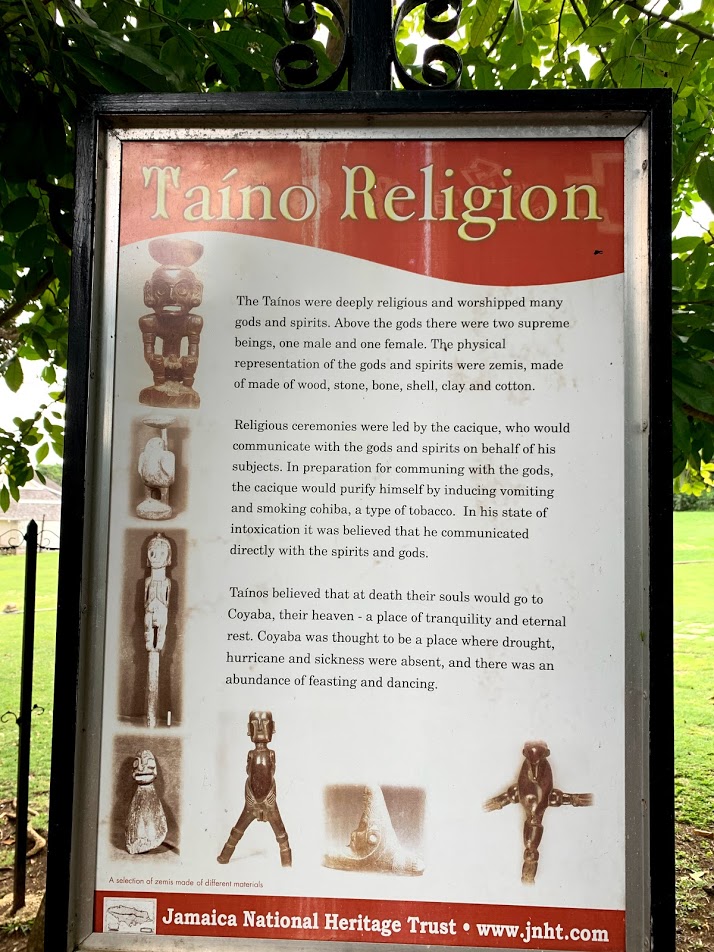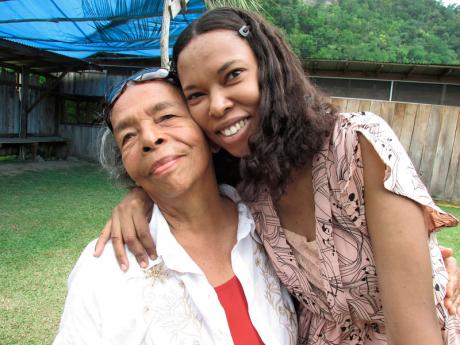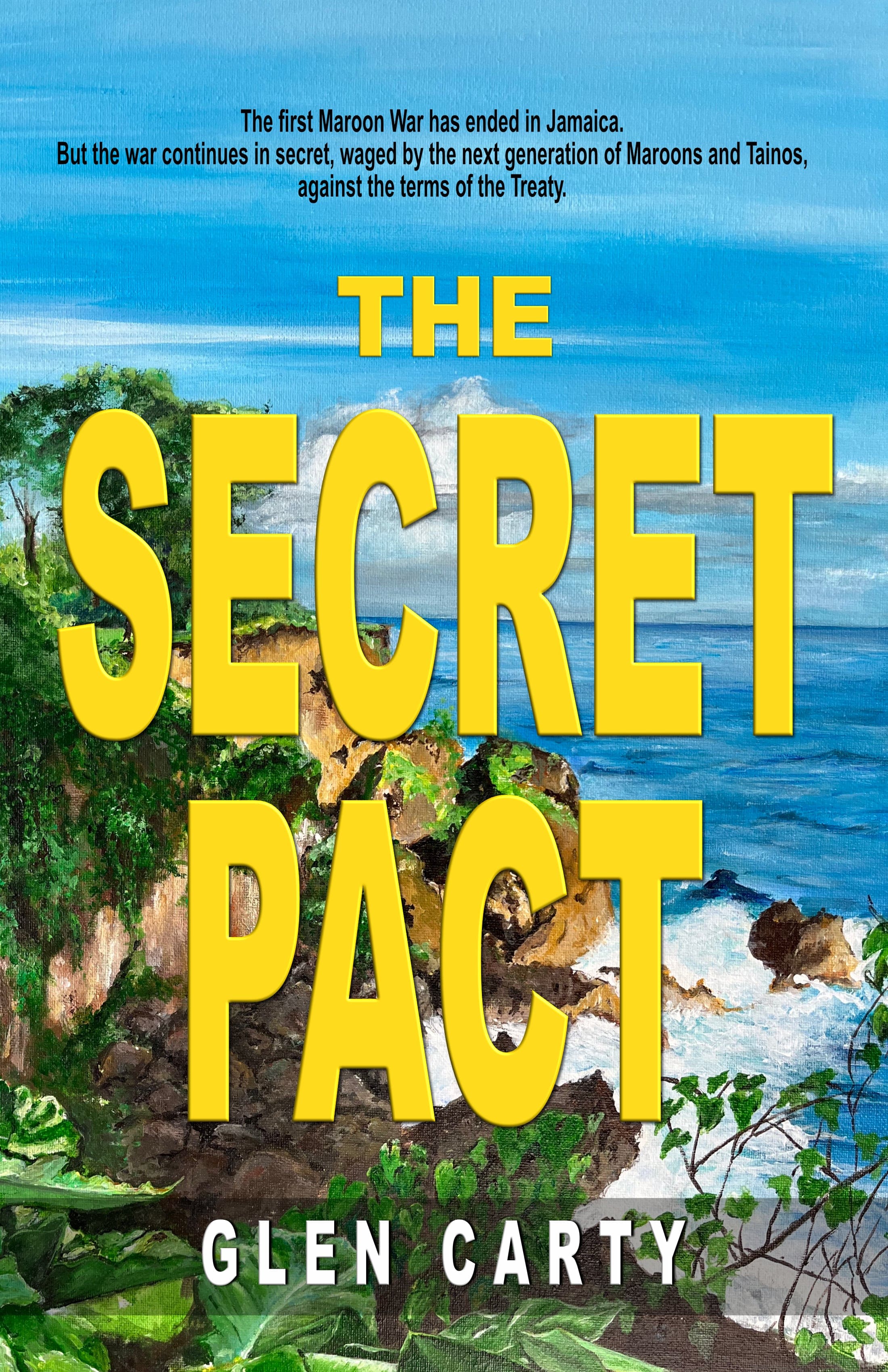The Tainos, The Original Jamaicans
"They will give all that they do possess for anything that is given to them, exchanging things even for bits of broken crockery. They were very well built, with very handsome bodies and very good faces....They do not carry arms or know them....They should be good servants".
...Christopher Columbus, on meeting the Tainos for the first time in the Bahamas in 1492. Impressed with their generosity, which may have contributed to their undoing.
The Tainos were the native Indians of Jamaica, who lived a peaceful lifestyle that was changed in immeasurable ways when the Europeans arrived. They had their origins in the Arawak tribes of Eastern Venezuela, in an area called the Orinoco Delta. Factions from the tribes gradually began exploring the surrounding areas of the Antilles by sea, spreading further north in waves beginning around 400 B.C. They eventually settled and developed self-sufficient communities in Haiti and the Dominican Republic, Jamaica, eastern Cuba, Puerto Rico, the Virgin Islands and the Bahamas.
Spanish chroniclers describe Taino towns, predominantly those in the Dominican Republic, as densely settled, well organized and widely dispersed. They were described as inventive, developing techniques to extract the poison from yuca before consumption, pepper gas for warfare, ocean-going canoes large enough for more than 100 paddlers and games played with balls made of rubber.
Lifestyle
Jamaica is estimated to have been settled by the Tainos around 650AD. It is estimated that there were over 200 villages across the island by the time Columbus arrived in 1494. The Tainos were generally a peaceful people with a gentle culture, characterized by happiness, friendliness and a highly organized hierarchical, paternal society. Each society was a small kingdom and the leader was called a cacique. The cacique's function was to keep the welfare of the village by assigning daily work and making sure everyone got an equal share. The relatives of the caciques lived together in large houses in the center of the village made of mud, straw and palm leaves.

Click to Expand
The houses did not contain much furniture. People slept in cotton hammocks or simply on mats of banana leaves. They also made wooden chairs with woven seats, couches and built cradles for their children. The general population lived in large circular buildings called bohios, constructed with wooden poles, woven straw, and palm leaves. When the Africans came they introduced mud and wattle as primary building materials.
The Indians practiced polygamy with a man having 2 or 3 wives, and the caciques had as many as 30. It was a great honor for a woman to be married to a cacique. Not only did she enjoy a materially superior lifestyle, but her children were held in high esteem.
The typical Arawak/Taíno village contained a flat court in the center of the village, with houses set around the perimeter. A favorite form of recreation was a ball game played on rectangular courts and this open space in the center of the village was used for these games as well as for religious and secular gatherings.
There was only one cacique in a community and he was paid a tribute (tax) to oversee the village. Other sub-levels of caciques existed, but these positions were not paid but were treated as positions of honor. They were liable for various services to the village and cacique.
Food and Agriculture
The diet of the Tainos centered around meat or fish as the primary source of protein and agriculture. They raised their crops in a large mound, called a conuco, which was devised especially for farming. They packed the conuco with leaves which improved drainage and protected it from soil erosion. One of the primary crops cultivated by the Taíno was cassava or yuca, which they ate as a flat bread. They also grew corn, squash, beans, peppers, sweet potatoes, yams, peanuts as well as tobacco. Smoking was popular. It was not only a part of their social life, but was used in religious ceremonies.
Transportation and Defense
There were no large animals such as horse, oxen or mules, transportation was done either by foot or by rivers and the se. They used dugout canoes which were cut from a single tree trunk and used with paddles. They could take 70-80 people in a single canoe. The Spanish chroniclers quote an estimate of 100 or so, but either way, these canoes must have been extremely well crafted and stable because they were used for long travels by sea. They were also used for fishing off the coast.
The Tainos were peaceful, but did have to defend against the Caribs from other islands, who were cannibals. The Caribs were centered at what is today Puerto Rico, but were distributed among the Lesser Antilles to the east. The Caribs were war-like and often raided the more Tainos, killing the men, stealing the women for breeding and fattening the children to eat. The Tainos made bow and arrows for defense, and developed poisons the tips of the arrows. They used spears clubs made from hardwood trees on the island.
What Happened to the Tainos?
In the words of Columbus himself, quoted at the beginning of this page...
They will give all that they do possess for anything that is given to them, exchanging things even for bits of broken crockery. They were very well built, with very handsome bodies and very good faces....They do not carry arms or know them....They should be good servants".
... The early Spanish settlers went miles further; they quickly enslaved the indigenous people and began them to do their labor.
The popular narrative surrounding the fate of the Jamaican Tainos is that they all died out from the hard labor imposed by the Spanish and the diseases such as smallpox and measles that they brought, for which they had no natural immunity. There is an account of reports that when posed the questions, "How many Indians are there? Who are the chiefs?" The governor answered, "None. They are gone."

"I Am Not Extinct"
Jamaican Taino Declares Ancestry
Jamaica Gleaner
While this is still generally, the accepted history, it is important remember that many Taíno women married conquistadors, especially in the Dominican Republic, and later the same cohabitation happened when the Africans arrived resulting in a population of mixed blood, heritage and culture.
The Jamaican Taino
With demise of the Tainos, the Spanish were left with limited options for supplementing their dwindling workforce, so they turned to the importation African slaves into Jamaica, a century before the British arrived. Many slaves chose to flee into the interior of the mountains rather than suffer enslavement by the Spanish, and by the time the British arrived had setup communities within the dense interior of the island. These runaways were called Maroons, a word believed to have derived from the Spanish word Cimarron, initially used to refer to feral cattle and later applied to both indigenous Caribbean and African people that escaped enslavement. There is a another belief that the word originated before the Africans arrived and that the earliest Maroons may have in fact been used to describe indigenous people seeking relief from Spanish abuses. Consequently, there is an assertion that there are Tainos, who escaped the Spanish (and when the term Maroon was first used), eventually meeting and intermarrying with the Africans when they arrived later. The argument concludes that the Tainos did not disappear from history exclusively through of death, but also cultural assimilation.
Coming in June
A Novel
A Tale of Resistance waged by the next generation of Maroons and Tainos, against the terms of the British Treaty.
Fiwi Roots Publishing

[ Read More ]
The Accompong Town Maroons are descendants of the first Africans who fled the Spanish and whose numbers were later augmented a century later with other Africans running away from the British rule. These Maroons successfully waged war against British colonial rule that resulted in the establishment of an independent community in western Jamaica, one of several across the island.
Maroon Oral History over centuries, has included stories of the coexistence of Maroons and Taino Indians who fled the Spanish. The Blue Mountains being much more isolated compared to Accompong, which is located much closer to the major plantations to the west, provided the Tainos the ideal environment to live a life of isolation from the colonialists. Many escaped the Spanish and headed east to the Blue Mountains, where they survived and thrived in relative peace. It is believed that the Maroons who also fled to the Blue Mountains, joined these Indians, cohabitating without much concerns about being discovered. The Maroons who settled in communities such as Accompong to the west, also encountered and cohabitated with Indians, but their proximity to the more densely settled areas, created the additional need to share strategies of resistance and collaboration in survival.
There is a growing interest in this area of research. One such research, approved by the University of Notre Dame and the Accompong Town community authority, examined the mitochondrial lineages of Accompong Town Maroon residents in order to learn more about the biogeographic origins of the community.
DNA was collected from 50 local Maroons, 16 females and 34 males, and were included for analyses along with a much larger sample of Jamaicans outside of the Maroon community.
The conclusion was that the Accompong Town Maroons are predominately of African descent with some indigenous American ancestry, consistent with what is relayed by their oral history, ethno-historic sources, and now genetic data.
Source: American Journal of Human Biology
